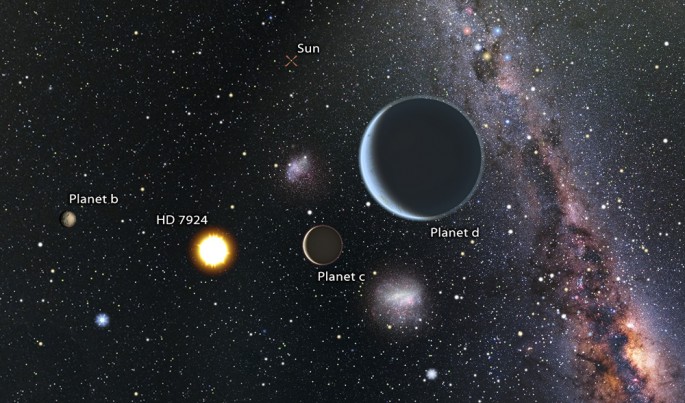The hunt for exoplanets is not over as a new computer program specificially designed to search for planets outside the solar system has located a star system with three "super Earths" that can be considered as our neighbors some 54 light years away from Earth.
Using the Doppler method, astronomers made this discovery by measuring the wobbles that resulted from the orbiting planets and their gravitational pull when it passes by its parent star.This particular star called the HD7924 is also visible in the night sky which is located in the northern hemisphere.
The three exoplanets are estimated to be six to seven Earth masses where they orbit their star in very close proximity, closer than Mercury to our sun where each of them has an orbit lasting five days, 15 and 24 days.
The research team discovered these Earth like planets which are composed of scientists from the University of Hawaii in Manoa, University of California, Berkeley, University of California Observatories and Tennessee State University using ground based telescopes which are the Automated Planet Finder (APF) Telescope located at Lick Observatory, California, the W. M. Keck Observatory on Maunakea, Hawaii, and the Automatic Photometric Telescope (APT) at Fairborn Observatory in Arizona.
According to researcher Lauren Weiss, this is the type of planetary system discovery that scientists will soon find in nearby stars and galaxies in the next few years.
The APF telescope in Lick Observatory is using new technology where hunting planets are conducted every night by programmed computers rather than human observers.
According to BJ Fulton from the University of Hawaii, initially the team used the APF telescope like a regular one where scientists stay up all night to search every star there is however, giving that task to a computer who will take the graveyard shift is favorable after months of little sleep. This is how the team made a program and used this software to replace the scientists with a robotic planet hunter.
The innermost planet that is orbiting HD7924 was detected in 2009 by Keck Observatory using the HIRES instrument mounted on the 10 meter Keck I Telescope. The other two planets were discovered five years following the first planet using Keck and APF.
This studys is published in The Astrophysical Journal.



























